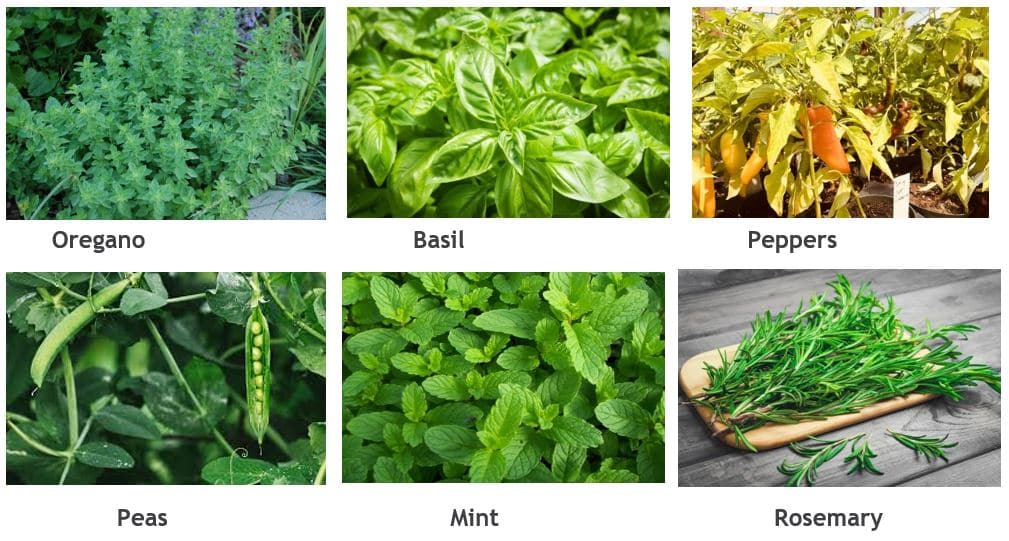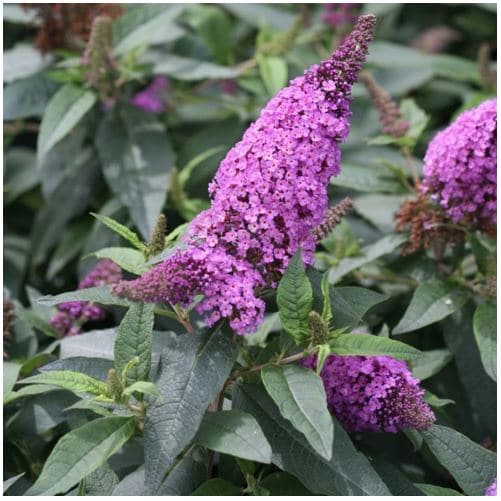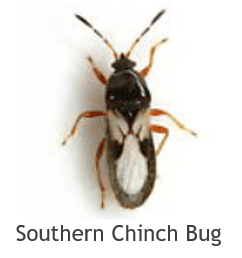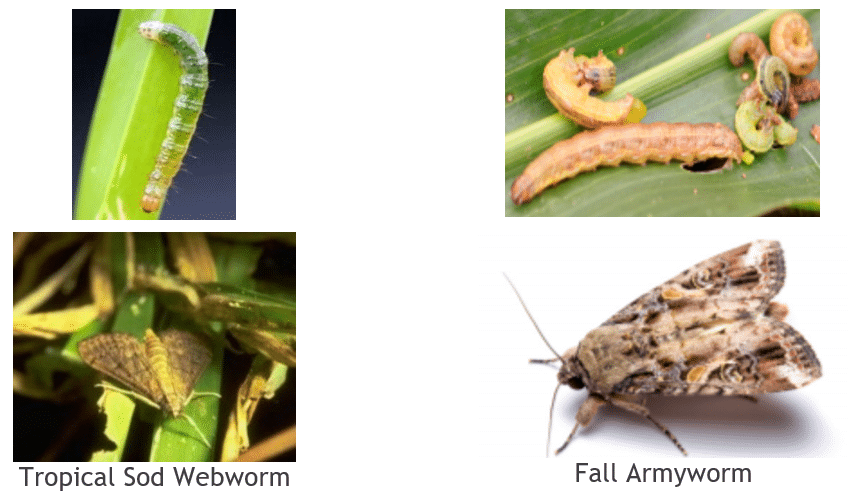
June Newsletter
June Gardening in the Greater Jacksonville Beaches area!
Summer is here!
Summer has certainly begun. Not surprisingly, days have been very warm. In past years, the average high temperature in June has been 86.7°, beat out only by July at 89.3°. Rainfall is usually low early in the month but increases by the end so that June is considered part of the rainy summer season. Cloud cover, too, increases from 46% to 58% by the end of the month. The summer solstice, longest day of the year, is on June 21.
As temperatures increase, it becomes more important to give plantings some extra attention. Warmer weather speeds plant growth and increases transpiration, so plants need more water. Information about xeriscaping, at the end of this newsletter, may give you some ideas for handling heat and drought. In any landscape it is important to plant in the relatively cool morning, out of the sun as much as possible. The tiny hairs on some roots can desiccate within seconds so work quickly. Create a lip or moat when planting so water is retained around the root zone. Keep in mind that plants in containers usually require more water than those in the ground.
CLICK HERE FOR CONSULTATION FORM!
What to Plant
Houseplants: Many plants which need indoor protection in winter will get a lift from outdoor summer-time life in North Florida. These transitional plants can be an important part of your outdoor design. Avoid direct sunlight for most, at least while they acclimate a few increasing hours each day to higher light conditions. We currently have a great selection including air plants, hoya, succulents, kalanchoe, bromeliads, African violets, calla lilies, ferns, zz plants, orchids, palms, dracaena, ficus and more.
Annuals (Or Grown As Annuals): If supertunias, petunias and alyssum are planted so they receive afternoon shade or in moveable containers, then these can often be babied through the hot season until they can proliferate again in the fall. If pruned at this time you may often get another flush of blooms. More reliable for May are angelonia, blue daze, caladium, celosia, coleus, gazania, pentas, vinca (Catharanthus), wax begonia, zinnia, helichrysum, verbena, bacopa, marigold (Tagetes), sunpatiens, crossandra, melampodium, portulaca and sweet potato vine. Trailing torenia is particularly useful, with sustained flowering through the summer. It also doesn’t require, and does better without, full sun.

Perennials: Most perennial types can be planted now. Many perennials have very long bloom times, including salvia, beach sunflower, gaura, bush daisy, hibiscus, porterweed, yarrow, plumbago, firecracker grass (Russelia), firespike (Odontonema), bulbine, shrimp plant (Justicia), cigar plant (Cuphea), canna lily, gerbera daisy and lantana. Native plants like cone flower, black-eyed susan (Rudbeckia), blanket flower (Gaillardia), tickseed (Coreopsis) and milkweed (Asclepias) are good choices for a more natural landscape and to support wildlife. You can install groundcovers and border plants like blueberry flax (Dianella), African iris, holly fern, autumn fern, liriope, mondo grass, aztec grass, society garlic, foxtail fern and Asiatic jasmine. Also, many bulbs can be planted at this time, particularly crinum, caladium, canna, and agapanthus. Ornamental grasses include sea oats, fountain grass, muhly grass and pampas grass. Some of the great tropicals we grow here seasonally or with occasional protection are variegated shell ginger, mandevilla, ixora, croton, cordyline, colocasia, stromanthe, bougainvillea and bird of paradise.

Vines: Vines include passion vine, English ivy, confederate jasmine, Carolina jessamine, morning glory, blue sky vine, bower vine, butterfly vine (Mascagnia), clerodendrum, crossvine, hyacinth bean, dutchman’s pipe, coral honeysuckle, Mexican flame vine, and moonflower.
Trees and Shrubs: Trees, shrubs and tropicals can be planted at this time with a little extra care to supply enough water. See the section on irrigation. Firebush (Hamelia), azaleas, princess flower (Tibouchina), loropetalum, bush daisy, coontie, pyracantha, banana shrub, bananas, crape myrtle, pineapple guava, hollies, junipers, gardenia, Japanese blueberry, ligustrum, oleander, pittosporum, podocarpus, viburnum, duranta, buddleia, bottlebrush, hydrangea, mimosa, thryallis, and Indian hawthorn can usually be found at this time. If you don’t find what you’re looking for, we may be able to locate it for you. Don’t forget edibles such as citrus, blueberries, blackberries, raspberries, figs, culinary ginger, goji berry and turmeric. We carry blackberries and raspberries with low chilling-hour requirements to grow in our mild climate.
CLICK HERE FOR CARE GUIDES!
Lawn: Sod can be planted at almost any time of year, but better when it is actively growing early in the season. Summer heat can be stressful but there is usually more rain during this time also. If your lawn failed previously in an area, make sure the best variety is installed for that location and do a soil test. Stagger pieces of sod and fit closely together. Wait 3-4 weeks before mowing and one to two months before fertilizing. If planting plugs, space 6-12 inches on center and don’t mow for at least 2-4 weeks or until firmly rooted, and don’t fertilize until they’ve grown together. Water sod and plugs lightly but frequently for the first month. Don’t apply a pre-emergent herbicide at least 2-4 months before sodding or plugging.
Vegetables and Herbs: We have many vegetables, herbs and edible shrubs for your garden. The best crops to plant for warm weather are okra, eggplant, peppers, beans of all types, southern peas, Malabar spinach and sweet potatoes. Although they grow well in summer, some of these crops and others such as corn and melons, need to be planted early to have enough time to produce. Summer squash and cucumbers should also already be in the ground, as should tomatoes to allow enough time before temperatures become too hot. Except for the cherry tomato type, tomato growth may already be starting to decline. See our handout Planting Guide for North Florida Vegetables, for vegetable growing information. CLICK HERE!
Many herbs don’t grow well after late spring, but these can stand up to the summer heat: lemon grass, lemon balm, lemon verbena, basil, African blue basil, cilantro, Cuban oregano, chives, Mexican tarragon, bay laurel, stevia, lavender, mint, rosemary, and oregano/marjoram. See our handout Planting Guide for North Florida Culinary Herbs for additional growing information. Also see Herbs for North Florida, for some specific variety and usage information for many of the herbs we carry. CLICK HERE!

Plant Focus
Pugster Butterfly Bush

Named because of its likeness to the Pug dog – the Pugster Butterfly Bush is short, stocky and adorable! Developed by Proven Winners, there are currently 5 colors in the series, which has won some Flowering Shrub of the Year Awards. Like other Buddleias it attracts pollinators and is drought and heat tolerant. It also blooms most of the season with a sweet honey fragrance and without deadheading. Its most endearing quality, though, are full size flower panicles on a shrub that maxes out at 2′, so it is especially useful in small gardens. And don’t be concerned about planting in mass as it is extremely hardy.
What to Do
Irrigate: Rain often increases toward the end of June, but in the meantime, aim for about 1″ of water weekly. Apply no more than 1/2 to 3/4″ at a time, to avoid runoff. The SJRWMD allows Wednesday/Saturday irrigation for odd numbered addresses and Thursday/Sunday irrigation for even numbered addresses, outside the hours of 10 a.m. to 4 p.m. Nonresidential properties can water on Tuesdays/Fridays. Use of a micro-spray, micro-jet, drip or bubbler irrigation system is allowed any time. New plantings can be watered any time of day for 30 days post-planting and every other day for the next 30 days. Some trees may require up to 5 months of supplemental watering to establish strong roots; after the initial 2 months, this can be supplied by hand watering. It’s a good idea to check your sprinkler system for any breaks or misaligned spray heads at least monthly.

Mow: As temperatures rise and grass growth increases, frequent mowing produces a strong lawn. Never remove more than 1/3 of the leaf blade at a time and mow to the highest recommended height to support root growth. Here are the recommended mowing heights for several N. Florida grasses: Bahia grass at 3-4 “, Zoysiagrass coarse textured varieties at 3-4″ and fine textured at 1-2″, Centipedegrass at 1½ to 2½”, Seashore Paspalum at 1½ to 2″, and St. Augustinegrass at 3 to 4″ but up to 4.5″ in the shade with the standard varieties.
Fill Lawn: Fill in low spots in your lawn with quality sterile sand mixed with organic matter, an inch or two at a time. As the grass grows into this, repeat with another 1-2″ layer until the low level is even with existing ground.
Harvest: Continue to harvest citrus as it ripens. Many of the blueberry varieties will ripen this month.
Mulch: Replace deteriorating mulch with a new 2″ layer to moderate soil temperatures, retain soil moisture, and reduce erosion and weeds. Organic matter is added to the soil as mulch decomposes. Mulch also creates an attractive unified look to highlight your plantings. Florida’s warm and often wet weather can lead to rapid breakdown of mulch.
Solarize the soil: This is a good time to use a cover of clear plastic over garden soil as a non chemical method to control soil borne pests such as nematodes, insects, weeds, and pathogens by raising the temperature of the soil. It also speeds the breakdown of organic material so more soluble nutrients are in the soil. Dig a trench around the area to be solarized, wet the soil to 12″ deep, cover the area with 1-4 mil clear plastic and fill in the trenches over the plastic so there is a tight seal over the soil. Keep this down for 6-8 weeks, repairing any tears that might occur. When the process is finished, disturb the soil as little as possible so weed seeds which were deep below the surface aren’t brought up.
Fertilize: Lawn fertilization isn’t recommended now that temperatures have risen but other plantings may benefit from fertilizer at this time. Select a fertilizer with at least one third of its nitrogen as a slow release (non-water-soluble) form.
Fruiting shrubs and trees generally need more fertilizer during the year than other shrubs and trees. Recommendations for fruit tree products and frequency depends on the type of tree. Fertilize blueberries lightly every other month. Figs and bananas should be fertilized monthly. Citrus should be fertilized 3 or 4 times during the growing season, starting in March. See our handout Citrus Care Guide for more information. CLICK HERE!
Fertilize palms about every other month during the growing season. Palms need a high potassium to nitrogen ratio plus added magnesium so an 8-2-12 fertilizer with 4% magnesium works well.
Herbs and vegetables will benefit from a slow/continuous release organic fertilizer applied every 3 to 4 weeks (herbs at half strength). In general, even though it’s a little costlier, try to use a slow release fertilizer or fertilizer with at least 30% as a slow release component. These feed plants more consistently and lessen pollution. Discontinue fertilizing if plants go into obvious decline with the heat.
Control Weeds: Unless weeds are extensive, non-herbicidal methods of weed control should always be considered first, and now that the weather has heated up its even more important. Post-emergent herbicides shouldn’t be used if summer air temperatures are greater than 90°. Maintaining proper mowing height and frequency can eliminate many annual weeds in lawns. Alternative methods may be needed for weeds which establish and flower below the recommended height of the grass. If weeds aren’t extensive, its simpler to manually pull them. In beds and paths and where turf isn’t grown, a deep layer of mulch can smother weeds. In nonflammable areas such as sidewalk cracks, weeds can be torched.
If herbicides are required, Fertilome Weed Free Zone is a post-emergent herbicide for broad leaf weeds useful in 45-90°F temperatures. Fertilome Selective is useful for spot treatment. To control nut-sedge and dollar weed, make sure you’re not creating favorable conditions by over-watering your lawn. Always choose an herbicide that lists your lawn type on the label and follow instructions carefully as they can vary.
Monitor and Control Insects and Disease: Continue to monitor pests and disease on houseplants, lawns and gardens. Fungal disease can occur almost any time of year, especially if the landscape is over watered or watered at the wrong time of day. Bonide Infuse Systemic Disease Control can prevent and control fungal growth.
In lawns, watch for discolored areas, which may be a sign of disease. Take-all root rot is a fungal disease of lawns, occurring in St. Augustinegrass and bermudagrass, and often showing in spring or early summer when the turf is emerging from dormancy. A stressed lawn or prolonged periods of rain can also bring on the disease. Turfgrass decline can be difficult to diagnose but a maintenance program with Rockaway is a first step to controlling and identifying these problems.
Thrips, scale, and mites become more active in warm weather. Check for thrips on leaves and flowers of roses and gardenias. Inspect for oleander caterpillar damage on oleanders.
Aphids feed on tender new growth. Frequently scout the vegetable garden for these insects as well as scale, caterpillars and white fly, as insects are easier to control when first noticed. Beneficial insects such as ladybug beetles and lacewing can control soft-bodied insect pests. To maximize the effectiveness of these natural enemies, provide habitat and relief from high temperatures by increasing the amount and diversity of plants in your landscape. Refer to our handout Ladybugs, for storage and release information. CLICK HERE!
Insecticidal soap and horticultural soap sprays will also control many soft-bodied insect pests, and a product such as Dipel Dust with B.t. (Bacillus thunbergiensis) is useful against caterpillars. Spinosad is particularly effective on caterpillars and thrips (also leafminers, spider mites, mosquitoes, ants and fruit flies) and lasts up to 4 weeks. Additionally, it is safe for people, beneficial insects and adult butterflies, and safe for bees once it has dried. Neem oil can be used to combat insects, mites and fungus. Many insect problems require a combination of pest management products and techniques. .


The major lawn pests active this time of year are Southern Chinch Bug, Tropical Sod Webworm and Fall Armyworm. Mole crickets can be a pest of bermudagrass, bahiagrass, and centipedegrass.
Chinch bugs suck the juices from St. Augustinegrass at or just below the soil level. Injured plants look stunted, yellowed, wilted, or dead. Yellowish to burnt-brownish patches are often first noticed in sunny areas along sidewalks and driveways, or in poorly irrigated areas. To help control the problem, limit nitrogen fertilizer and reduce thatch thickness to minimize the bug’s habitat.
Newly hatched larvae of tropical sod webworm skeletonize grass blades while older larvae chew on grass blades near soil surface. Small patches of grass may look ragged and irregular. The adult moth does not cause damage but the life cycle from egg to adult only requires 5-6 weeks at 78°F.
Fall armyworm caterpillars skeletonize grass blades then later create bare spots. Mole crickets cause their destruction by tunneling under the surface causing damage to grass roots. Two of the three mole cricket species are also herbivorous.
Younger caterpillars of both armyworm and webworm are more easily controlled with reduced-risk products like B.t., halofenozide and spinosad. Bifenthrin also targets both these caterpillars and Chinch bugs. You can use a product like Hi Yield Bug Blaster Plus Above/Below. Bifenthrin can also be used to control mole crickets, as can a few other insecticides and beneficial nematodes. Controls for mole crickets should be applied by mid-June while the crickets are still small. Rotate combination products to reduce resistant populations and spot treat when possible.
In weedy areas and open fields, Lubber Grasshopper adults may be found from March to November. It may be possible to avoid the use of an insecticide by hand-picking the grasshoppers and mowing vegetation to appropriate heights.
For any problem, it may occasionally be less costly and more environmentally friendly to replace infected plants with another species that would be more appropriate for the site. Don’t be reluctant to remove a plant that just isn’t working.
